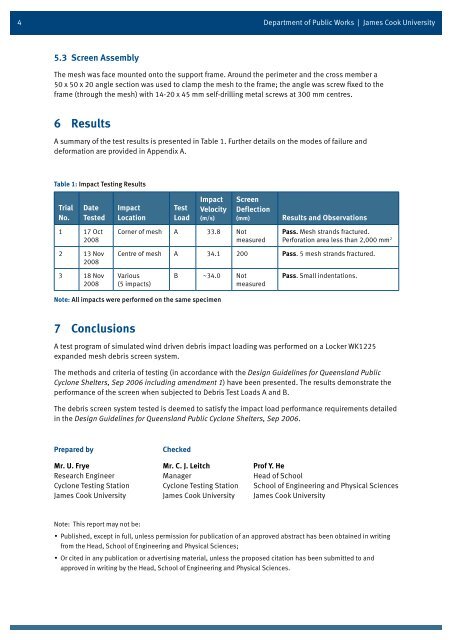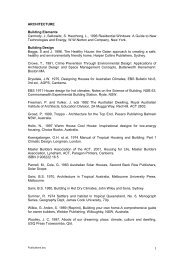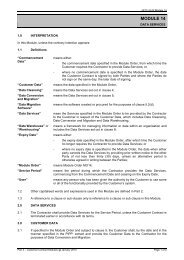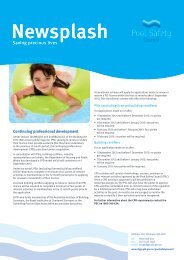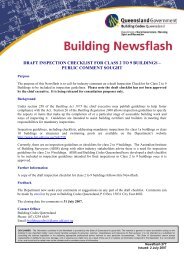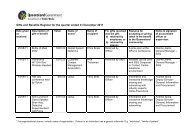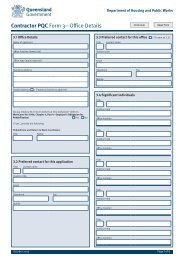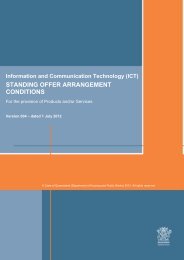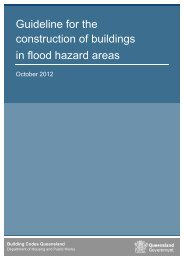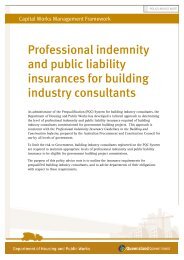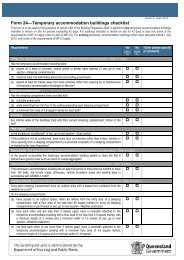Simulated Wind Driven Debris Impact Testing of Locker WK1225 ...
Simulated Wind Driven Debris Impact Testing of Locker WK1225 ...
Simulated Wind Driven Debris Impact Testing of Locker WK1225 ...
- No tags were found...
You also want an ePaper? Increase the reach of your titles
YUMPU automatically turns print PDFs into web optimized ePapers that Google loves.
4 Department <strong>of</strong> Public Works | James Cook University5.3 Screen AssemblyThe mesh was face mounted onto the support frame. Around the perimeter and the cross member a50 x 50 x 20 angle section was used to clamp the mesh to the frame; the angle was screw fixed to theframe (through the mesh) with 14-20 x 45 mm self-drilling metal screws at 300 mm centres.6 ResultsA summary <strong>of</strong> the test results is presented in Table 1. Further details on the modes <strong>of</strong> failure anddeformation are provided in Appendix A.Table 1: <strong>Impact</strong> <strong>Testing</strong> ResultsTrialNo.DateTested<strong>Impact</strong>LocationTestLoad<strong>Impact</strong>Velocity(m/s)ScreenDeflection(mm)Results and Observations1 17 Oct2008Corner <strong>of</strong> mesh A 33.8 NotmeasuredPass. Mesh strands fractured.Perforation area less than 2,000 mm 22 13 Nov2008Centre <strong>of</strong> mesh A 34.1 200 Pass. 5 mesh strands fractured.3 18 Nov2008Various(5 impacts)B ~34.0 NotmeasuredPass. Small indentations.Note: All impacts were performed on the same specimen7 ConclusionsA test program <strong>of</strong> simulated wind driven debris impact loading was performed on a <strong>Locker</strong> <strong>WK1225</strong>expanded mesh debris screen system.The methods and criteria <strong>of</strong> testing (in accordance with the Design Guidelines for Queensland PublicCyclone Shelters, Sep 2006 including amendment 1) have been presented. The results demonstrate theperformance <strong>of</strong> the screen when subjected to <strong>Debris</strong> Test Loads A and B.The debris screen system tested is deemed to satisfy the impact load performance requirements detailedin the Design Guidelines for Queensland Public Cyclone Shelters, Sep 2006.Prepared byCheckedMr. U. Frye Mr. C. J. Leitch Pr<strong>of</strong> Y. HeResearch Engineer Manager Head <strong>of</strong> SchoolCyclone <strong>Testing</strong> Station Cyclone <strong>Testing</strong> Station School <strong>of</strong> Engineering and Physical SciencesJames Cook University James Cook University James Cook UniversityNote: This report may not be:• Published, except in full, unless permission for publication <strong>of</strong> an approved abstract has been obtained in writingfrom the Head, School <strong>of</strong> Engineering and Physical Sciences;• Or cited in any publication or advertising material, unless the proposed citation has been submitted to andapproved in writing by the Head, School <strong>of</strong> Engineering and Physical Sciences.


